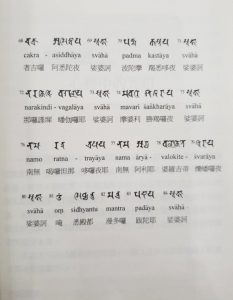

Lord Avalokitesvara is the supremely compassionate helper and is often depicted with a thousand eyes and a thousand arms for that purpose. He supremely exemplifies the Bodhisattva’s resolve to postpone his own Buddhahood until he has helped every sentient being on earth achieve moksha (liberation) from suffering and samsara – the process of death and rebirth. In Sanskrit, He is referred to as Lokesvara (“Lord of the World”) or Padmapani (“Holder of the Lotus”). In Japan, Avalokitesvara is known as Kannon (Kwannon, Kanzeon). King Songsten-Gampo (the founder of the Tibetan Empire), who brought Buddhism into Tibet, is regarded as an incarnation of Chenrezig, as are the successive Dalai Lamas.Īvalokitesvara is also credited with introducing the prayer formula ”Om mani peme hung” to the people of Tibet. In Tibetan, He is known as Chenrezig and is said to emanate as the Karmapa (the head of the Karma Kagyu), the Dalai Lama, and other high lamas. The sutra narrates a discourse between Avalokitesvara and the Buddhas, wherein one learns that Lord Avalokitesvara brings salvation from all sins, even those that were previously considered to be unforgivable sins that lead to the death of the soul.Īvalokitesvara (also known as ”the lord who looks in every direction”) is one of the most important Bodhisattvas in Mahayana Buddhism, who embodies the compassion of all Buddhas. Maha Karuna Dharani Sutra (or Nilakantha Dharani), popularly known as the Great Compassion Mantra (or Da Bei Zhou), is an 84-line chant of Mahayana Buddhist origin, first translated from Sanskrit to Chinese in the 7th century. Is often at the end of mantras – it means “so be it”.What are the lyrics and meaning of the Great Compassion Mantra? Introduction Pronounced Sarwa (with a roll of the tongue). So whenever you see Tadyatha Om, it usually means that this is the start of the mantra proper after an invocation.

Tadyatha means “It goes like this” as in, “This mantra goes like this”.You will see the phrase Tadyatha (pronounced Ta-di-a-ta) followed by Om in many Buddhist mantras: Greatly Compassionate One (Mahakarunikaya)Ī lot of the Gwan Yin Mantras start like this – so if you memorize this first section, you will already know the start of several other Gwan Yin Mantras.Ĭommon terms you often find in mantras include the following: Tadyatha Om.Homage to the Noble/Holy (Arya) Avalokiteshvaraya (Gwan Shi Yin – the Contemplator of the World’s Sounds).

Homage to the Triple Jewel (Ratna Trayaya).The first section mantra starts with an invocation to the Triple Jewel and to invite Gwan Yin himself/herself: How many lines of that section have the same ending.How many lines of this section begin with this same start.“Oh, this section has the same endings – like a poem or a rhyme or like in a song”,.What I’ve done is put the sections with the same starts and endings into groups (so there is less to remember and so that you can recognize patterns) – to make it easier to learn and remember: The thing is to learn it line by line each day or little section by little section each day – that way, it’s easier to remember 1 little section that sounds similar together at once before progressing on to the next section. Imee Ooi’s version of the Sanskrit Great Compassion Mantra / Nilakantha DharaniĪmazon – only costs 99c US here. It’s easier to remember and more beautiful to learn it whilst listening to it as a song: Imee Ooi (the beautiful Buddhist singer) has the most complete version of the Sanskrit Great Compassion Mantra that I’ve heard. You will get benefits even just from having the sound of the mantra passing by your ear. The Great Compassion Mantra (Da Bei Jou) of Gwan Yin Bodhisattva can help heal illnesses (NOT a replacement for getting proper treatment from a doctor) and help you get rid of your bad karma. The Principle of Reciting the Holy Name of Gwan Yin Bodhisattva.A simple way to understand the 5 Skandhas (the mind/body complex that we call our "Self").Why do Buddhists give offerings to the Buddha?.The 4 Types of Enemies Disguised as Friends - The Buddha in the Sigalovada Sutta.
NAMO RATNA TRAYAYA HOW TO
How to actually use the 4 Noble Truths in your everyday life.The Buddha's guidelines on how to look after your money.



 0 kommentar(er)
0 kommentar(er)
